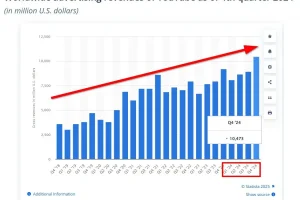Digitalization is challenging traditional industries, and it has particularly affected the communication and entertainment sectors. This digitalization, which is currently impacting banking business segments, has the potential to turn the financial industry on its head. While some banks have already embraced these technological advances, others remain stuck in the Industrial Age mindset. For example, Goldman Sachs is a prime example of an organization that has taken bold steps towards embracing digitalization. But why have banks been so slow to adopt these innovations?
The traditional model of banking evolved into a variety of services for individuals and businesses. Various financial services now fall under the umbrella of a financial conglomerate, which can include a retail bank, an investment bank, a merchant bank, insurance, and asset management. Adaptation to customer needs is the primary driving force behind financial industry innovation. For instance, financial institutions guarantee liquidity lines for off-balance-sheet entities. These innovations required highly skilled human resources.
Careers in the financial industry are highly lucrative and in high demand. Unfortunately, getting into the financial services industry is not as simple as it seems. Entry qualifications for many financial jobs are as high as the salaries they offer. For this reason, a four-year degree is required to break into the industry. Most professionals in this field hold an advanced degree. And a career in this industry means you’ll be playing a pivotal role in keeping the economy strong.
The Finance Industry’s diversity is a concern for the United States. The EEO-1 report looks at how diverse the finance industry is, both in the management ranks and as officials. The report supports proactive programs that seek to eradicate potentially discriminatory practices in the financial sector. The report is a useful resource for finance employers looking to take advantage of the labor market. The report also provides a brief overview of the findings of the report. And there’s much more to learn from these studies!
While digitalization is inevitable, it can also slow down the process of embracing FinTechs. Many of the technological innovations used in the financial industry have not been fully integrated. This is due to the lack of common technological standards among banks. Historically, the software and hardware used for this purpose was designed for scientific, rather than financial, purposes. As a result, banks have no consistent and standard IT infrastructure, so start-ups cannot provide a solution for all banks.
In the US, the Consumer Financial Services Industry consists of a host of major players, such as mortgage lenders and mortgage brokerage firms. LendingTree, the largest online marketplace for loans and credit cards, provides personal loans, and the Financial Industry Regulatory Authority oversees financial institutions. The OCC regulates the national banks and recently announced that banks cannot use the coronavirus pandemic to expedite branch closures. However, some new financial services regulations may have already begun to take effect.
While the first period of financial industry history has been characterized by strict regulation and interventionism, the second period is characterized by increasing instability. It lasted from the 1970s until 2007, when the subprime mortgage crisis hit. The stability of the first period contrasts sharply with the countless bankruptcies and financial crises of the second. In addition, monetary policy and regulation were laxer during this period, which allowed financial innovation to take hold.








